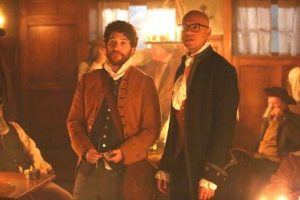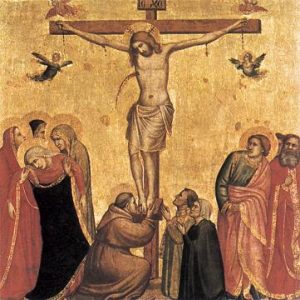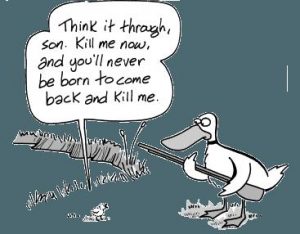This is mark Joseph “young” blog entry #78, on the subject of Novel Fears.
With permission of Valdron Inc I am publishing my second novel, Old Verses New, in serialized form on the web (that link will take you to the table of contents). If you missed the first one, you can find the table of contents for it at Verse Three, Chapter One: The First Multiverser Novel. There was also a series of web log posts looking at the writing process, the decisions and choices that delivered the final product; the last of those for the first novel is #71: Footnotes on Verse Three, Chapter One, which indexes all the others and catches a lot of material from an earlier collection of behind-the-writings reflections that had been misplaced for a decade. Now as the second is being posted I am again offering a set of “behind the writings” insights. This “behind the writings” look definitely contains spoilers, and perhaps in a more serious way than the previous ones, because it sometimes talks about what I was planning to do later in the book or how this book connects to events yet to come in the third (For Better or Verse). You might want to read the referenced chapters before reading this look at them, or even put off reading these insights until the book has finished. Links below (the section headings) will take you to the specific individual chapters being discussed, and there are (or will soon be) links on those pages to bring you back hopefully to the same point here.
There was at this point one similar previous mark Joseph “young” web log post covering this book:
- #74: Another Novel (which provided this kind of insight into the first nine chapters along with some background material on the book as a whole).
This picks up from there, and I expect to continue with additional posts after every ninth chapter in the series.

History of the series, including the reason it started, the origins of character names and details, and many of the ideas, are in those earlier posts, and won’t be repeated here.
Chapter 10, Hastings 47
When writing the Multiverser rules, I had described “stage two” as “attempting to achieve that higher level of consciousness known to the ancient monks of Tibet as ‘awake’”. I didn’t use the whole line here, but I still liked the description. Lauren supposes herself surrounded because her dream-state is overlaying the mossy trees of the new world with the imagery of giant birds from the previous one.
Those who have read the previous book know that there is some connection between Lauren and Merlin. This is where it starts.
I knew from the beginning of the first book–even before it was going to be a book–that eventually Lauren was going to become Merlin’s pupil. It was, I suppose, one of those ideas Ed Jones had that he never fully executed; but he credited me for it in a round-about way. I had been running his character in Multiverser games, and had a crazy idea for a Narnia series. It would begin with an adventure connected to The Silver Chair, a rather easy one to build an adventure around, but people in the world would recognize him from an earlier visit in the time of Prince Caspian which he had not yet made. Thus I was going to run him through a series of adventures in this world in reverse chronological order, and tease him in the present with things he was going to do in the past. He liked the idea so much he had a character named Henry show up and tell me that I was Merlin. I’ve probably already covered this (I’m writing this history of the ideas entirely out of sequence, so I have not yet written the history of the ideas in the first book that far). I worked out that I was eventually going to meet Merlin and then later be mistaken for him. I figured out how to get around the fact that Lauren was a woman (and so could not be mistaken for Merlin), but she was still going to be his student. It was time to do that. I knew I needed in this book to train Lauren, give her her other name of Laurelyn, connect her to Wandborough, introduce Bethany as her student, and not make it seem like this was the entire point of the book. That meant I needed ample time to do other things, and I had to create story lines that led her to these events smoothly.
Chapter 11, Kondor 45
CPR—Cardiopulmonary Resuscitation—was not taught to lifeguards when I took my training, nor part of Boy Scout first aid. It was not developed until I was starting college, I think, and then it became very popular very quickly. More recently it has been revised to eliminate the interruption for breaths when working alone, but Joe would have learned the version that was taught at the turn of the century, which is the one I represent here.
My father once commented on that aspect of the history of medicine. We were taught a couple ways to pump air into the lungs of someone who was not breathing, with Mouth-to-Mouth Resuscitation the most modern of them. It wasn’t until the 1960s that someone thought to blow air into the lungs of someone not breathing. I’m guessing that before that they thought that exhaled breath wouldn’t have enough oxygen in it, but there must have been a time before that when they wouldn’t have thought to consider that.
The reaction seemed apparent.
Chapter 12, Brown 4
Derek is working through the process of proving to himself that this nightmare of his present experience is not a dream. It’s not really that easy to do.
The line “But a wrong is unredressed when retribution overtakes its redresser” is taken directly from Poe’s story. I was very impressed with it, and brought it over into my dialogue.
When I ran this game for my son, Montresor’s gun was a muzzle-loaded cap-and-ball. After reading Poe, I moved it up to the early nineteenth century and gave him a revolver, which made more sense as a weapon in Multiverser terms. It also meant that even if Montresor responded faster than Derek, Derek would have a chance to kill him before dying.
I needed the talking killer; but I needed to make it seem reasonable. Thus I came upon the idea of moving Derek to a spot where he would not be seen, and letting Montresor spill his guts about the murder as a way of trying to flush him out. I also wanted Derek to kill the killer, but die in the process, which is a difficult stunt to arrange, but I think I did it.
This is terribly athletic for Derek, but it is an act of desperation in a desperate situation.
It is also improbable in Multiverser that a knife wound would be rapidly fatal; I’m assuming that Derek is teaching himself a kill technique, which he refines in future encounters.
Derek takes the knife with him; it is now his, and becomes his first real weapon even though it’s only a butcher knife.
Chapter 13, Hastings 48
I never explained how Merlin knew anything he knew; at this point, he was just Merlin, Lauren’s teacher for this part of her adventures and part of the mythology of Camelot. He expects her because by some magic he knew she was coming, but I don’t know how he knew.
When Lauren was working with the parakeet language, my editor became impatient that I was trying to explain why names did not translate, but that was actually a problem—ordinarily names do translate, because they have meanings. It seems that the parakeet names did not have meanings, but were musical strings identifying individual birds. Having established then that the names did not translate, I now had to explain why in this case they did. It was essential to my story of Lauren that she somehow was going to become Laurelyn of Wandborough, and part of that was that I was making the name “Lauren” a shortened form of “Laurelyn”. The trick was not quite sudden, and took some thought; but it had occurred to me that I could get to Laurelyn from Lauren if I suggested it was the earlier form of the same name, and that the creation of the name Elsbeth (a popular name in fantasy at least) could give me Spellsbreath, which would be a fun name to give her.
As to that, I never checked. I don’t know that the names are etymologically related at all, but it sounds good.
I also have no idea about the spell that creates the road, and don’t think I ever used it again.
Chapter 14, Kondor 46
Medicine is one of those things that seems almost magical if you don’t know what’s happening, but in this case the doctor is intelligent and experienced enough to figure out what it is that Joe did, and try to learn it.
One of the challenges in front of Joe that I did not want to overlook is that he knows how to do things with much more advanced medicine and equipment, and of course he knows what he learned in Sherwood, but it was pretty likely that there would be medicines and procedures here that “everyone knows” that he had never seen. He had to be able to learn them without suggesting that he doesn’t know any real medicine—but the CPR incident has moved him forward significantly in that regard, an incidental benefit of an event that was intended primarily as a moment of excitement in what is otherwise a routine storyline.
I briefly contemplated whether Kondor should do the medical advances thing here, so I brought it up thinking my readers would probably also wonder about that. I found reasons why it would not work, and so was able to avoid telling the same story over again.
Chapter 15, Brown 5
The ghost story I made up out of whole cloth. It probably has some connection to a lot of haunted house movies that I never saw.
The haunted house was an experiment. I’d never run it, never really thought much about it, but I wondered whether I could do it. I later wrote it up for game play, and have used it in convention demos.
The bicycle now came in handy as a reference point for him to track; that part was fortuitous.
I think it was an episode of Seaquest DSV in which the characters were exploring a ghost ship, a haunted sunken passenger liner, and one of them touched a doorknob that was blazing hot but immediately thereafter cool. I liked the idea, but reversed it to cold, partly because I didn’t want to steal it outright and partly because I think of ghosts as connected more to cold than to heat.
I got the idea at this point of having him pick up souvenirs of each world. He had the knife from the last world, and I was going to add the blanket from this one.
Part of the trick to this world is that the ghost can do things like slam a door or freeze a doorknob or cause noises, but initially these are all done in a way that admits to being otherwise explained. Derek has to recognize that there is a ghost here, and until then he will continue to provide rational explanations for everything that happens, or at least attempt to do so. Providing his rational explanations and maintaining the mood of something eerily supernatural was the challenge through this world.
The house has a shape in my mind that is drawn really from several houses, and ultimately it does not fit into a coherent floor plan. I attempted to fix this when I made it into a playable world, but it wasn’t too important here.
Versers generally have to find an explanation for themselves. Lauren chose to believe that God was sending her into worlds to do good, Bob that he was training for Ragnorak, Joe that there was a scientifically explainable accident that infected him with scriff resulting in random travels. Derek is still exploring possibilities, and the notion that “this is the afterlife, and you’re a ghost” certainly is one.
When I was twelve we moved into a new development, and over the course of the next dozen years there were always houses being erected within a block or two of where we lived. Being kids, we always explored the building sites on weekends and summer evenings, often collecting scrap wood with which to build tree houses. I spent a fair amount of that time looking at the way the buildings were constructed, and that nervousness Derek has about the open space where the stairs had not been installed was my own—if I fell into the basement, not only was I likely to be seriously injured, there would be no way for me to climb out again.
There were times when my mother would put clothes on the stairs for us to take to our rooms. She didn’t do it often, partly because she tended to do the laundry before anyone else was awake, and partly because we weren’t very good about putting the clothes in closets and drawers, but there was a time when I had to check to see if anything piled on the stairs was supposed to go up with me to my room. I figured Derek had the same experience.
It occurs to me that in my mind’s eye I have a pattern, a floor plan, of Derek’s home. We never see him there but in his own recollection of the moment his friend broke the game controller and he versed out the first time. However, I see that as the living room of a house in which we lived briefly on Del-a-vue Avenue in Carney’s Point. It had a couple of small rooms upstairs, and my mind made one of those Derek’s bedroom. I don’t see that it ever mattered, but it was part of the character background.
The wait has made Derek the more nervous, and so he rushes as he decides the stairs are safe. Thus his fall is abrupt.
The wooden floor was an accommodation to the fact that I did not want him seriously injured in the fall. When I see this stairway, it is the one in my mother’s house in Ramsey, carpeted stairs with a flagstone hall at the bottom. (The floorplan here is very like that house, but that at the bottom of the stairs there is no door to the left leading into the family room, and there is no front door leading outside, and the archway to the living room is open—my mother’s has folding doors concealing that room.)
I worried about the electronics he was carrying—laptop, video game. I decided that between the backpack and the blanket these things were probably adequately wrapped such that they could survive the tumble, even though they might have broken, and so since I needed them to survive they did.
Chapter 16, Hastings 49
The uncertainty in regard to the date helps me avoid the problems associated with dating the Camelot stories; all extant accounts are considerably later and highly fanciful, but exactly when any of these people might have lived is debated.
My vision of Merlin’s home probably owes something to Disney’s The Sword in the Stone.
I had by this point worked out what the acorn was. It was one of those abrupt flashes of realization, but now I had to figure out how to keep it from becoming known before the reveal.
Some of this was rewritten, particularly in reference to Bob Slade, after I had finished the third novel, because I surprised myself there and needed to anticipate that here.
I picked up from C. S. Lewis the notion that it was possible that the myths of Paganism were preparing the world for the coming of the gospel, and perhaps expanded it a bit to suggest that the gods of Paganism were real spirits charged with the care of various peoples in the world until such time as the gospel reached them. That allowed me to suggest that the gods of the druids were lawfully deities in Britain as servants of God—spiritual mid-level managers running their part of the world to the best of their abilities—and so I didn’t have to make Merlin a Christian for him to work with Lauren. The idea had been cooking in my mind for many years. God chose to have the gospel carried by people, not by angels. There seems a plausibility to the notion that some, at least, of the pagan gods were appointed to care for the nations to whom that message would not yet come. Lauren’s supernatural presence here might or might not change that.
In a sense, Lauren’s magic is less interesting to Merlin than her technology. He predates the invention of buttons, and so almost everything she carries is futuristic for him, and thus interesting.
It occurs to me that Merlin uses the Socratic Method; they use it in law schools. The idea is that you don’t tell the student what you want him to know, you ask him questions that will force him to reach the information himself. That way you’ve taught him how to think.
Chapter 17, Kondor 47
The idea of a major operation had the appeal that it would be exciting without being more combat (which can only be interesting so many times). Having it be the doctor who was injured meant first that there would be no question of whether someone else would care for the patient and second that new avenues would open for Kondor, as he would then have more to do in medical.
I read about using microwave scalpels to cauterize spleen injuries in Omni Magazine in the 1980’s; it still sounds futuristic to me, though. Spleens are so rich with blood that they don’t normally clot and seal. I included it in Kondor’s bag as a tool from the future.
The blood typing thing, and the notions that the humans aboard the Mary Piper might not be quite as “human” as they appear, is a consideration in a lot of games. I remember Eric Ashley dropped me in one world where all the proteins were linked opposite to ours, with the result that there was no nutrition in anything I ate. Here the concern is about matching blood types, and the recognition that there’s not much Joe can do without a lot of research he can’t do.
Chapter 18, Brown 6
Derek connects the sight of an electric light switch with proof of “civilization”, having just come from a nineteenth century home where lanterns and candles were the illumination of choice.
Derek’s internal struggle is part of the tension here. He can enjoy horror movies because they are not real (he ultimately recognizes this), but he would be terrified if for one moment he thought this was real.
As the ghost begins throwing objects, it starts surreptitiously, trying not to reveal its own existence at this point. It seems more as if things are falling than that they are aimed.
It occurs to me that I always envisioned Derek as finding his own as a computer whiz. That’s why he started with the laptop.
I hope these “behind the writings” posts continue to be of interest, and perhaps some value, to those of you who have been reading the novel. If there is any positive feedback, they will continue.
[contact-form subject='[mark Joseph %26quot;young%26quot;’][contact-field label=’Name’ type=’name’ required=’1’/][contact-field label=’Email’ type=’email’ required=’1’/][contact-field label=’Website’ type=’url’/][contact-field label=’Comment: Note that this form will contact the author by e-mail; to post comments to the article, see below.’ type=’textarea’ required=’1’/][/contact-form]







